The M19 Multiple Gun Motor Carriage was a late WW2 self-propelled anti-aircraft vehicle based on the M24 light tank chassis, sporting two Bofors 40 mm guns and produced by Cadillac and Massey Ferguson Canada from late 1944. It was fielded too late to see action in WW2 but saw first combat in Korea in 1950 against North Korean forces. It was gradually replaced by the M42 Duster iand completely phased out in 1953 but still active in other armies, notably the Netherlands until 1978.
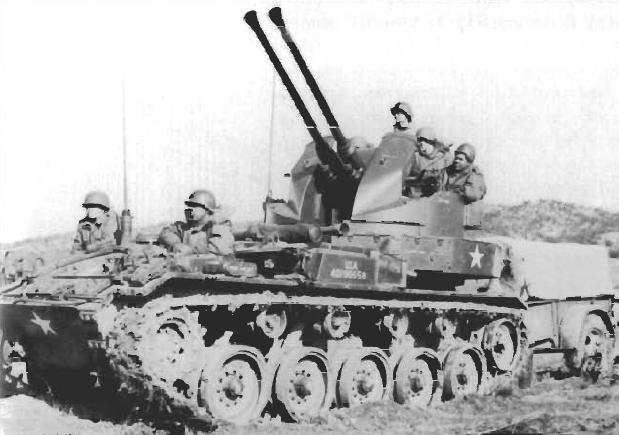

Already in 1941 several attemps were made to convert proper tanks into AA vehicles, some having a brand new turret. The M3 Grant/M4 sherman AA prototypes were short lived and it was found more useful to convert earlier, lighter chassis such as the M3/M5 Stuart. This led to the design of the T65, based on the M5 chassis. Called T65 40mm GMC (Gun Motor Carriage) it was a success, but the M5 was going out of production. Work started in May 1941 with the T16 4.5in Gun Motor Carriage which Cadillac adapted on the M5 Light Tank, lengthened with a third bogie. This modified M5A1 chassis started as a family of self-propelled gun designs ("Light Combat Team").
The T65 was produced for Anti-Aircraft Command with a twin 40mm Bofors gun moun on a circular platform at the back. The prototype had excellent trials, and by February 1943 the Anti-Aircraft Command ordered 1,000 of them, soon rejected by the Army Ground Forces as the M5 scheduled to leave production, and in betwee the replacement T7 Light Tank and T21 Light Tank were cancelled. In April 1943 the T24 succeeded and entered service as the M24 Chaffee, providing a new basis as the "Common Chassis Concept".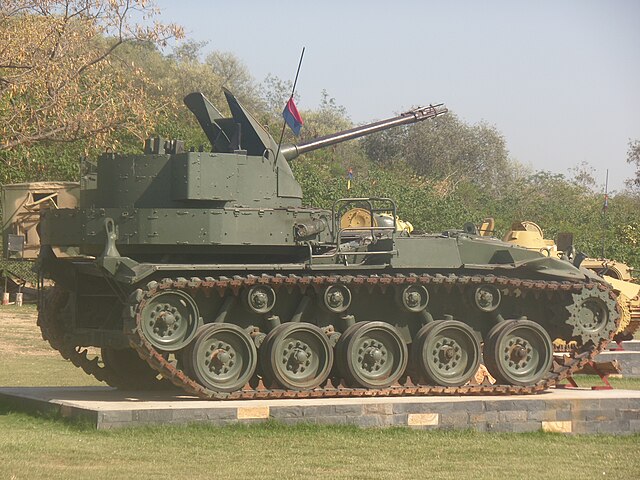
The T65E1 had the same overall layout as the T65 GMC with its gun turret at rear, engine in the middle. It had a few minor changed. There was notably a new angular gun shield instead of a straight one for better protection all around. The M19A1 appeared later as an improved variant with an auxiliary engine and spare barrels for the 40 mm Bofors guns. It also had an auxiliary engine and generator to power up the 40 mm guns when the main engine was cold. It had also fixtures for carrying two spare gun barrels. However its own production planned for late 1945 never started, but it enabled the former M19 to be upgraded to this standard prior to development in Korea.
The hull was otherwide similar to the M24, with however a swap in position of the engine in central position, separating the driver from the fighting position behind. Communcation however was not requested underway as the vehicle needed to stop to fire. The guns were not stabilized and it was very innacurate while underway. Protection of the chassis was the same as for the regular M24 hull, the vehicle being 17 ft 11 in (5.46 m) long, 9 ft 4.0 in (2.845 m) wide and 9 ft 10 in (2.997 m) tall barrels down. Total weight in battle order was 38,499 lb (17,463 kg), less than the Chaffee. Armour was limited to 0.40–1.50 in (10–38 mm), the latter for the hull nose, all welded. The twin Bofors was protected by a shield only 0.4 inches thick, so stopping small arms fire and light shrapnel. It only partially protected the crew, generally the pointer and gunner, but neither the commander and loaders.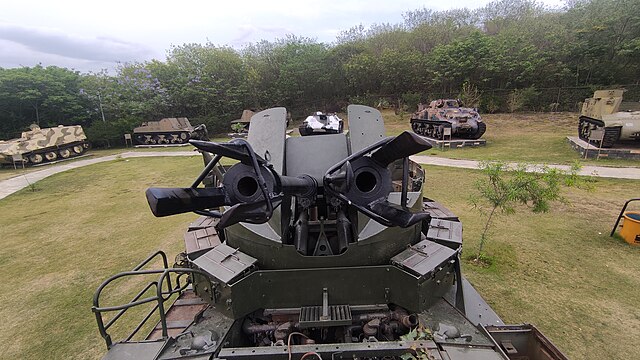
Gun barrels (A1), close.
The rear mount was on a pedestal, which sisdes were bins containing spare round clips (352 rounds total). There was also strapping for tooling in order to stay the gun barrels clean and workable, repair a jamming, ect. Above was the "bathtub" containing the pair of Bofors and its mount protected by a forward shield. The ubiquitous Bofors 40 mm Automatic Gun L/60 was licence produced by the US and Britain in 1940 in very large quantities in order to be placed in all ships of both the US and RN. The mount could elevate −5°/+90° at 55°/s and traverse to 360° at 50°/s. The rate of fire for 140 round/min at low elevation angles, by 4 rounds clips, manually loaded by gravity for each barrel. It could fire 120 round/min at high elevation angles at a muzzle velocity of 850–880 m/s (2,800–2,900 ft/s) and a range of 7,160 m (23,490 ft).
This was probably the best AA guns of the allies in WW2, copied by the Germans and Italians with a long service life until the end of the cold war. The Bofors could fire the British Mk. II high-explosive shell against aircraft (direct impact, no fuse), as well as the M81A1 armor-piercing round in ground combat, capable of penetrating some 50 mm of homogeneous armor plate from 500 yards. It could defeat indeedd most medium and light axis tanks and AFVs or even disable a Panther or STUG at the rear or between the drivetrain. It was all on paper, as it never had the occasion to prove it.
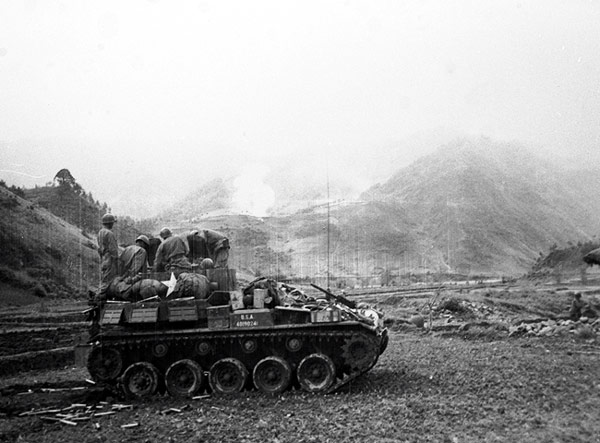
M19A1 attached to the 3rd division fires on Chinese positions
As the full order was not completed, requirements changed, extra chassis were diverted to produce more Chaffee light tanks instead. Too late to serve in Europe it was also never delivered to other countries in Lend-Lease or via MDAP (Military Assistance Program) with the excpetion of a small numbers transferred to the Netherlands in 1951 and a few sent to Japan, to be tested by the newly established JGSDF in 1954.
It was however available to serve in the Korean War mostly as an assault gun as the danger or North Korean aviation was reduced. It was used notably in defense on the Eastern side of the Chosin Reservoir, by US Army units of the 31st and 32nd Infantry and in the Pusan Perimeter. It was used at many occasion afterwards until 1954. Its firepower was especially effective against mass charges of Chinese PLA infantry. Its devastating effects had also a moral impact on attacking troops. The damage these explosive shells inflicted to infantry was the stuff of nightmare. However as the Korean war ended, the vehicle was sent to depots again, and then scrapped as the new M42 Duster entered service. The latter had the same armament, but with an improved mount, better chassis of the M41 Walker Bulldog, being faster and having more ammunitions, on the standard of the M19A1. The bext step would be the M163 VADS of the Vietnam era.
Development of the M19 MGMC
M13 and M17 MGMC
The need for an organic anti-aircraft protection led in WW2 to adopt the M3 hald track based M17 MGMC as standard equipment. Before this, several models were tried such as the T28E1 AA variant of the M2 half track, the M13/M14 based on the M3 half track and the mass produced M17 MGMC, whuch became the main SPAAG in US and allied armied until 1945. The M17 was well armed with a quad 12.7 or 0.5 inches Browning heavy machine gun mount roughly equivalent to the German Flakvierling. However the vehicle had numerous limitations, a mixed traction that limited mobility on all terrains, poor protection and a weak, short range armament.Enters the T65

Already in 1941 several attemps were made to convert proper tanks into AA vehicles, some having a brand new turret. The M3 Grant/M4 sherman AA prototypes were short lived and it was found more useful to convert earlier, lighter chassis such as the M3/M5 Stuart. This led to the design of the T65, based on the M5 chassis. Called T65 40mm GMC (Gun Motor Carriage) it was a success, but the M5 was going out of production. Work started in May 1941 with the T16 4.5in Gun Motor Carriage which Cadillac adapted on the M5 Light Tank, lengthened with a third bogie. This modified M5A1 chassis started as a family of self-propelled gun designs ("Light Combat Team").
The T65 was produced for Anti-Aircraft Command with a twin 40mm Bofors gun moun on a circular platform at the back. The prototype had excellent trials, and by February 1943 the Anti-Aircraft Command ordered 1,000 of them, soon rejected by the Army Ground Forces as the M5 scheduled to leave production, and in betwee the replacement T7 Light Tank and T21 Light Tank were cancelled. In April 1943 the T24 succeeded and entered service as the M24 Chaffee, providing a new basis as the "Common Chassis Concept".
Enters the T65
On 23 May 1943 the army approved the development of a version of the T65 based on the T24 chassis, with a pilot produced under the designation T65E1, completed early in 1944 just adapting the former weapons system to the new chassis. Trials were successful and it was ordered into production in August 1944 as the M19 Multiple Gun Motor Carriage. It was accepted into service in May 1944 and was planned to equip several U.S. Army anti-aircraft units, replacing the M17 in 1945. Initially in May 1944 an order for 904 production models was sent to Cadillac, which lacked the capacity. 300 were thus sent to be built by Massey Ferguson (Massey-Harris) in Canada instead, with a production only starting by August 1944. So only 285 hadf been made aftrer a year in August 1945, an,d thus the US Govrenment via its ordnance department cancelled the order. They only reached operational capability in September 1945, too late to be deployed in Europe. Hostilities being stopped and production cancelled meant this park was partially deactivated, straight from delivery in an ordnance depot. They were reactivated on 1950 as the war in Korea flare up.Design

The T65E1 had the same overall layout as the T65 GMC with its gun turret at rear, engine in the middle. It had a few minor changed. There was notably a new angular gun shield instead of a straight one for better protection all around. The M19A1 appeared later as an improved variant with an auxiliary engine and spare barrels for the 40 mm Bofors guns. It also had an auxiliary engine and generator to power up the 40 mm guns when the main engine was cold. It had also fixtures for carrying two spare gun barrels. However its own production planned for late 1945 never started, but it enabled the former M19 to be upgraded to this standard prior to development in Korea.
The hull was otherwide similar to the M24, with however a swap in position of the engine in central position, separating the driver from the fighting position behind. Communcation however was not requested underway as the vehicle needed to stop to fire. The guns were not stabilized and it was very innacurate while underway. Protection of the chassis was the same as for the regular M24 hull, the vehicle being 17 ft 11 in (5.46 m) long, 9 ft 4.0 in (2.845 m) wide and 9 ft 10 in (2.997 m) tall barrels down. Total weight in battle order was 38,499 lb (17,463 kg), less than the Chaffee. Armour was limited to 0.40–1.50 in (10–38 mm), the latter for the hull nose, all welded. The twin Bofors was protected by a shield only 0.4 inches thick, so stopping small arms fire and light shrapnel. It only partially protected the crew, generally the pointer and gunner, but neither the commander and loaders.
Mobility
The M19 inherited its powerplant from the M24 Chaffee. It consisted in a twin Cadillac Model 42, V-8, gasoline rated for 220 hp (160 kW) like the M24, which procured a top speed of 35.0 mph (56.3 km/h) and max range of 150 mi (241 km). The drivetrain like the original comprised five roadwheels, front sprockets, rear idlers and four return rollers per side. The single pin tracks were padded.Armament

Gun barrels (A1), close.
The rear mount was on a pedestal, which sisdes were bins containing spare round clips (352 rounds total). There was also strapping for tooling in order to stay the gun barrels clean and workable, repair a jamming, ect. Above was the "bathtub" containing the pair of Bofors and its mount protected by a forward shield. The ubiquitous Bofors 40 mm Automatic Gun L/60 was licence produced by the US and Britain in 1940 in very large quantities in order to be placed in all ships of both the US and RN. The mount could elevate −5°/+90° at 55°/s and traverse to 360° at 50°/s. The rate of fire for 140 round/min at low elevation angles, by 4 rounds clips, manually loaded by gravity for each barrel. It could fire 120 round/min at high elevation angles at a muzzle velocity of 850–880 m/s (2,800–2,900 ft/s) and a range of 7,160 m (23,490 ft).
This was probably the best AA guns of the allies in WW2, copied by the Germans and Italians with a long service life until the end of the cold war. The Bofors could fire the British Mk. II high-explosive shell against aircraft (direct impact, no fuse), as well as the M81A1 armor-piercing round in ground combat, capable of penetrating some 50 mm of homogeneous armor plate from 500 yards. It could defeat indeedd most medium and light axis tanks and AFVs or even disable a Panther or STUG at the rear or between the drivetrain. It was all on paper, as it never had the occasion to prove it.
specifications M19 MGMC | |
| Dimensions (L-w-H) | 17 ft 11 in x 9 ft 4 in x 9 ft 10 in (5.46 x 2.845 x 2.997 m) |
| Combat weight | 38,499 lb (17,463 kg) |
| Crew | 6: Cdr, driver, 2 pointers, 2 loaders |
| Propulsion | Twin Cadillac Model 42, V-8, gasoline 220 hp (160 kW) |
| Top speed | c40 kph |
| Suspensions | Torsion bar |
| Range | 150 mi (241 km) |
| Armament | 2x Bofors 40 mm guns (352 rounds) |
| Armor | As M24 chaffee hull |
The M19 MGMC in action

M19A1 attached to the 3rd division fires on Chinese positions
As the full order was not completed, requirements changed, extra chassis were diverted to produce more Chaffee light tanks instead. Too late to serve in Europe it was also never delivered to other countries in Lend-Lease or via MDAP (Military Assistance Program) with the excpetion of a small numbers transferred to the Netherlands in 1951 and a few sent to Japan, to be tested by the newly established JGSDF in 1954.
It was however available to serve in the Korean War mostly as an assault gun as the danger or North Korean aviation was reduced. It was used notably in defense on the Eastern side of the Chosin Reservoir, by US Army units of the 31st and 32nd Infantry and in the Pusan Perimeter. It was used at many occasion afterwards until 1954. Its firepower was especially effective against mass charges of Chinese PLA infantry. Its devastating effects had also a moral impact on attacking troops. The damage these explosive shells inflicted to infantry was the stuff of nightmare. However as the Korean war ended, the vehicle was sent to depots again, and then scrapped as the new M42 Duster entered service. The latter had the same armament, but with an improved mount, better chassis of the M41 Walker Bulldog, being faster and having more ammunitions, on the standard of the M19A1. The bext step would be the M163 VADS of the Vietnam era.
Gallery
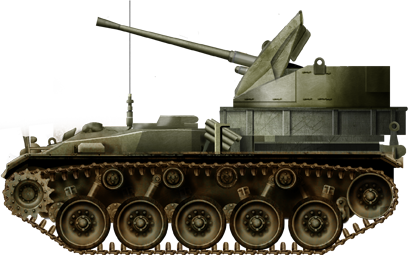
M19 in 1945
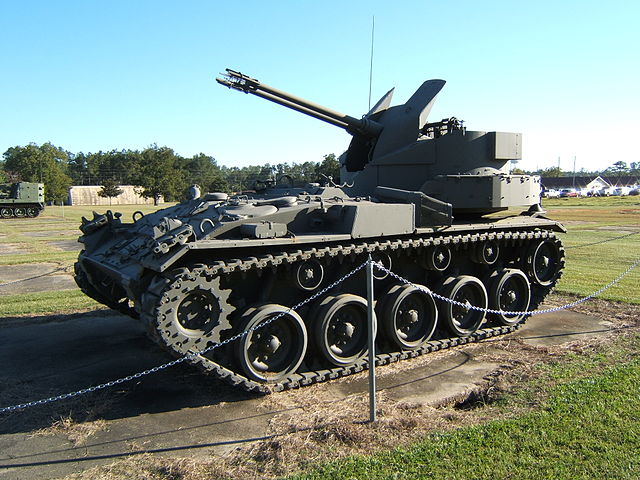
At Aberdeen proving grounds
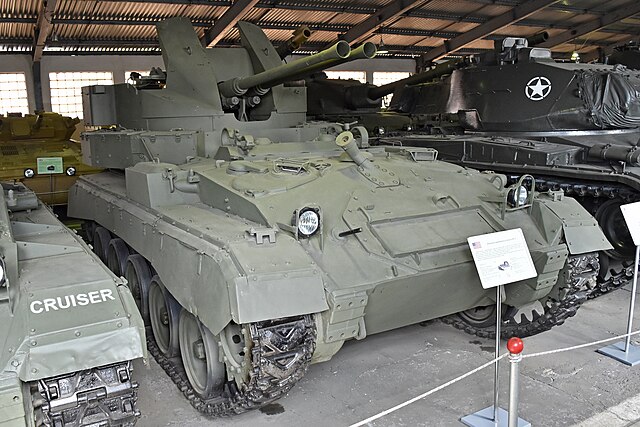
At Kubinka Museum
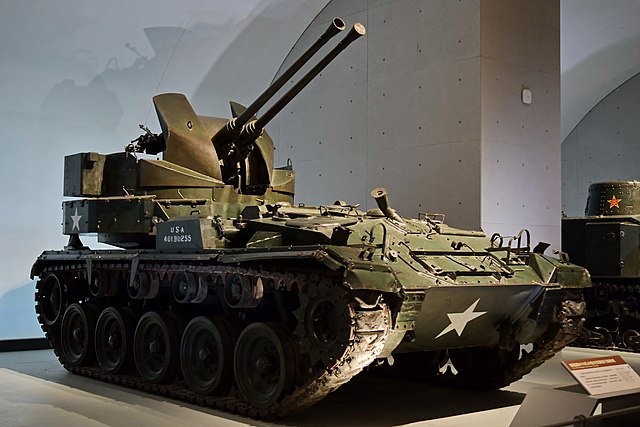
At the Beijing Museum
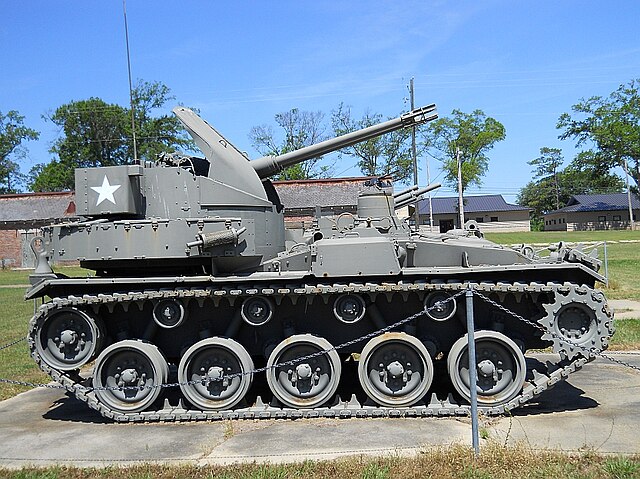
At MAFM
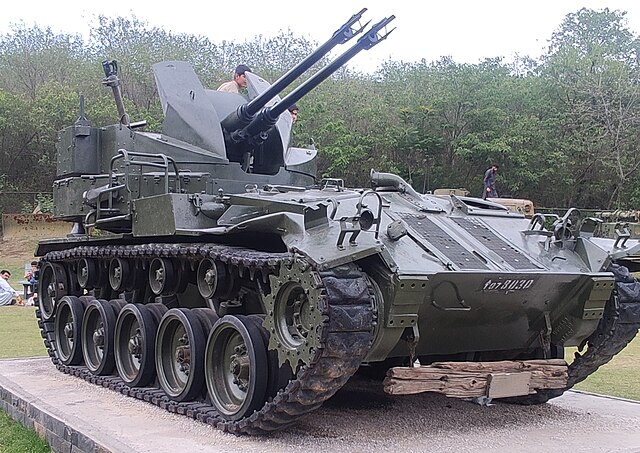
At Aberdeen proving grounds
Read More/Src
Books
Chamberlain, Peter; Ellis, Chris (1969). British and American Tanks of World War II. New York, NY: ArcoGander, Terry (2013). The Bofors Gun. Barnsley, UK: Pen and Sword.
Green, Mike (2014). American Tanks & AFVs of World War II. Oxford, UK: Osprey.
Hunnicutt, R. P. (1992). A History of the American Light Tank: Stuart. Navato, CA: Presidio Press.
Kinard, Jeff (2007). Artillery: An Illustrated History of Its Impact. Santa Barbara, CA: ABC-CLIO.
Zaloga, Steven J. (2003). M24 Chaffee Light Tank 1943–1985. New Vanguard. Oxford, UK: Osprey.
Links
On m24chaffee.comen.topwar.ru
youtube.com
weaponsystems.net
afvdb.50megs.com
historyofwar.org
en.wikipedia.org
Videos

WW2 Tanks




























WW2 tanks posters

All Tiger tanks liveries.

Panther liveries and variants

WW2 Armour - All tanks











Tanks aces and single tanks series

Find more there

Museums, Movies, Books & Games
The Tanks and Armor in pop culture
Tanks and armored vehicles in general are only really grasped when seen first person: The mass, the scale, it's all there. Explore also the way tanks were covered in the movie industry, in books and in video games.Movies:
Best tanks movie on warhistoryonline.com
On imdb.com
On bestsimilar.com/
miltours.com
liveabout.com/
watchmojo.com
Video Games:
pcgamesn.com
historyhit.com
levvvel.com
vg247.com/best-tank-games
mmobomb.com/
alienwarearena.com

